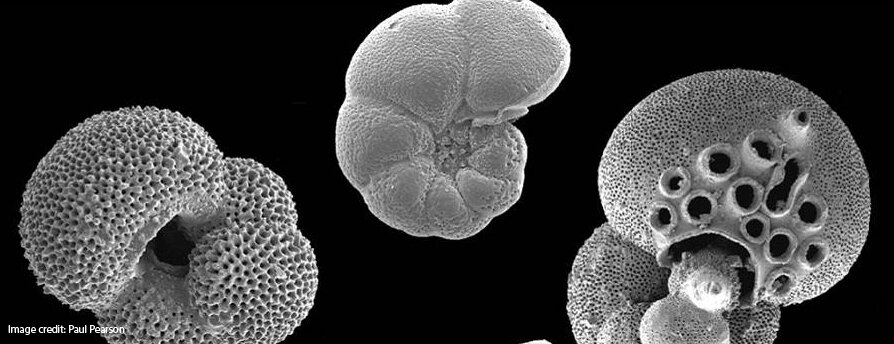PhD opportunities @theFosterLab 2021 Start
/
We have 3-fully funded PhD projects available this year (and we are involved with one project with Glasgow - see below). Please click on the links below for more details and to to GSNOCS (our graduate school) for details on how to apply. The deadline is 04 January 2021. Please contact Gavin through this website (here) or email: gavin.foster@noc.soton.ac.uk if you want to chat about them. Note for this year, Project 1 and 3 are suitable for UK, EU and overseas students as there is a fee waiver on offer. So where ever you are - please apply!
Project 1. Forams in the laser sights – time capsules of monthly-scale pH and temperature fluctuations.
If you like lasers and you like forams (and who doesn’t?) then this is the project for you!
We all know forams are great archives of past climates, but unfortunately their life processes and the mechanics of biomineralisation (how they make their shells) complicates how well they trace past environmental change (so called “vital effects”). The current method of analysis, where 10s to 100s of forams are crushed and analysed together, also represents a missed opportunity of reconstructing past climate change at a much higher resolution as each foram only lives for around a month and thus is potentially a high temporal resolution archive of climate change in the past.
In this project you will use new in situ laser ablation techniques to analyse Mg/Ca (for temperature) and d11B (for pH) at a fine-scale to improve our understanding of vital effects and unlock the potential of foraminifera to record temperature and pH at monthly scales.
For more details click here. Gavin is the lead supervisor for this project and it is funded by our INSPIRE DTP and includes the opportunity for field work in Bermuda to collect plankton tows and will use a number of new mass spectrometers we have recently purchased – including a time of flight ICPMS (the only one in a geoscience department in the UK)
Project 2. How do corals make their skeletons? Insights from boron geochemistry
Tropical coral reefs are diversity hotspots and provide many ecosystem services that sustain important economic activities. Both of these depend on the 3D framework of the reef that is constructed within a micron-sized space sandwiched between the coral animal and its existing skeleton. If we are to better predict what the coming decades have in stall for corals and the reefs they make we need to understand this calcification process better. One way to do this is with the boron based proxies that reveal the state of the carbonate system in the calcifying space.
In this project you will use laboratory experiments to grow aragonite (the CaCO3 polymorph corals use) under controlled conditions to better understand exactly how boron geochemistry reflects the carbonate system. The improved understanding you will develop will then be tested using careful measurements of the calcifying fluid using micro-electrodes and pH sensitive dyes and will feed into mechanistic models of calcification that can be used to understand how environmental change influences how corals build their skeletons.
For more details go here. Gavin is the lead supervisor for this PhD project is funded by the European Research Council as part of Prof Gavin Foster’s recently funded Advanced Grant Microns2Reefs. The project includes an extended stay in the laboratory of Prof Jonathan Erez in Jerusalem and potentially field work in the Red Sea to collect suitable coral species for culturing.
Coral Reefs are the largest bioconstructions on the planet. The 3d Framework of a reef is made by the skeletons of colonial scleractinian corals. Each colonies skeleton is constructed in a micron-sized space sandwiched between the existing skeleton and the coral animal. Schematic anatomy of colonial coral from Tambutte et al. (2011) labelled A and B
Project 3: Atmospheric CO2 variability and climate sensitivity during past warm climates - a lesson for the future?
The lead supervisor for this project is Dr Gordon Inglis here at Southampton and, as well as Gavin, it also involves Drs Jessica Whiteside (Southampton) and Jess Tierney (Arizona). By examining both the boron isotopic composition of foraminifera and the d13C of marine phytoplankton lipids during the Mid-Miocene (14 to 17 million years ago) this project aims to generate a high-fidelity, high-resolution multi-proxy CO2 record for this interval of global warmth. By comparing this new CO2 record to climate reconstructions at the time the student will be able to fully characterise the sensitivity of the Miocene Earth System to warming. This project is also funded through our INSPIRE DTP, for more details see Gordons website here.
Project 4: Understanding coral bleaching using multi-proxy bleaching reconstruction
Coral health is significantly impacted by coral bleaching (i.e. loss of symbionts). Coral bleaching is caused by a number of stressors such as thermal perturbations, disease, and freshwater runoff. This project aims to reconstruct past coral bleaching using a multiproxy approach applied to their skeletons, putting observationaly records of bleaching into a longer context to better evaluate the relevance of current bleaching trajectories. The lead supervisor of this project is Dr Nick Kamenos from The Univesrity of Glasgow, where the student will be based. The studentship is funded through the IAPETUS DTP - see here for more details. Note the deadline for the IAPETUS is Friday 8th Jan 2021 at 5pm.






